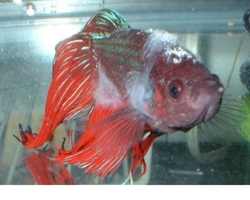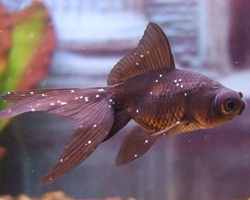Fish are susceptible to a wide variety of diseases, many of which can be fatal if left untreated. The fish disease is a common problem for fish keepers. There are many different types of fish diseases, and they can be caused by a variety of things, including bacteria, viruses, parasites, and even poor water quality. Some common fish diseases include bacterial infections, fungal infections, and parasitic infections. Often, these diseases are caused by poor water quality or crowded living conditions.
Most fish diseases can be treated with antibiotics or other medications. However, it is important to diagnose the disease early and treat it promptly before it becomes too severe. However, some diseases are more serious and can even be fatal to your fish. That is why it is important to learn about the most common types of fish diseases and how to prevent them. Prevention is always the best medicine when it comes to fish health, so maintaining clean water conditions and providing adequate space for your fish is essential for keeping them healthy and happy.
You might also read: API Leaf Zone vs Seachem Flourish
Table Showing Some Basic Comparison Between Columnaris and Ich
| Features | Columnaris | Ich |
|---|---|---|
| Causative agent | Flexibacter columnare | Ichthyophthirius multifiliis |
| Taxonomic Position | Bacteria | Protozoa |
| Susceptible Species | All freshwater fishes including goldfish, common carp, grass carp, etc. | For most of the cultured fish species; young fish are more susceptible |
| Symptoms | White or gray patches or streaks on the skin, fins, or tails and body, frayed fins; lethargy, loss of appetite and increased mucus production; ulcers on the skin, gills, and fins, as well as fin rot, cotton-like appearance; | White spots on the skin (which give ich its nickname ‘white spot disease), fins, or gills; increased mucus production; lethargy; and loss of appetite; rubbing against hard substances; |
| Preventive measures | Regular water changes and filtration; testing the water regularly for ammonia, nitrites, and nitrates; regularly clean the gravel and filter; quarantining new fish before adding them to your tank; Always maintain clean water conditions and avoid overcrowding your tank. | Quarantine any new fish before adding them to your main tank; keep your aquarium clean and well-maintained; maintain good water quality; regular water changes and monitor your water parameters closely; To raise the temperature of the water; |
| Treatment | Use antibiotics (Oxytetracyxline 50mg/kg body weight of fish with feed for 5-7 days); use of tea tree oil or vinegar to the tank; | Adding aquarium salt to the water at a rate of 1 teaspoon per gallon; provide herbal or natural therapy or use anti-parasitic medications; |
Columnaris
Columnaris is a common fish disease that can affect many different types of fish. It is caused by the bacterium Flexibacter columnare and can affect both fresh and saltwater fish. It is distributed worldwide, a contagious and chronic disease. It affects the external structure of the fish body.
Causal Agents: Flexibacter columnare
Susceptible Fish Species: All freshwater fishes including goldfish, common carp, grass carp, etc.
Symptoms of Columnaris
Symptoms of columnaris include white or gray patches or streaks on the skin, fins, or tails and body, frayed fins; lethargy, loss of appetite and increased mucus production; these patches may be fuzzy or have a cotton-like appearance. In more severe cases, the entire body of fish may be covered with these white patches. The disease can also cause ulcers on the skin, gills, and fins, as well as fin rot. If left untreated, columnaris can be fatal to fish or can lead to death but some preventive measures can be taken to help reduce the risk of this disease.

Preventing Measures of Columnaris
One way to prevent columnaris is to maintain clean water conditions in your aquarium or pond. This means keeping up with regular water changes and filtration as well as testing the water regularly for ammonia, nitrites, and nitrates. In this case, you should regularly clean the gravel and filter, and do a partial water change every week. This will help remove bacteria from the water and keep your fish healthy. It is often fatal, so it is important to take precautions to prevent your fish from getting sick.
It is also important to avoid overfeeding your fish as this can lead to poor water quality which makes it easier for bacteria like Flexibacter columnare to thrive. If you do notice any signs of columnaris such as lesions or ulcers on your fish, it is important to quarantine them immediately to prevent the spread of the disease.
Several medications can be used to treat columnaris though it is difficult to cure once it has progressed too far. By taking some simple precautions and being aware of the risks, you can help reduce the chance of your fish contracting this deadly disease.
Another way to prevent columnaris is by quarantining new fish before adding them to your tank. When you get new fish, put them in their tank for at least two weeks before adding them to the main tank. This will allow any potential illnesses time to develop so you can treat them before they infect other fish. The best way to prevent columnaris fish disease is to maintain clean water conditions and avoid overcrowding your tank.
Treatment of Columnaris
There are several different treatments available for columnaris fish disease, depending on the severity of the infection but it is important to consult with a veterinarian or aquaculturist before starting any treatment regimen. In some cases, simply increasing water quality in the aquarium or pond and adding aquarium salt to the water may be enough to clear up the infection.
More severe infections may require antibiotics specifically designed for treating columnais in fish but they must be used early in the course of the disease to be effective. Some hobbyists use alternative treatments such as tea tree oil or vinegar, but there is no scientific evidence to support their efficacy.
In some cases, antibiotics (Oxytetracyxline 50mg/kg body weight of fish with feed for 5-7 days) may be prescribed to clear the infection. However, many effective natural treatments can be used to treat columnaris without the use of antibiotics. These include using saltwater baths (15% for 15 minutes) or adding vinegar or lemon juice to the water.
Ich or White Spot Disease
If you have ever kept fish as pets, then you are probably familiar with the term “ich.” Ich is a common disease of fish which is also known as white spot disease or Ichthyopthiriasis. It is caused by the protozoan parasite, Ichthyophthirius multifiliis. Fish with ich typically have white spots on their body and fins, and may also exhibit increased scratching or rubbing. In severe cases, ich can lead to death.
Several things can cause ich in fish, including poor water quality, stress, and overcrowding. It is important to maintain good water quality in your aquarium or pond and to avoid overstocking. If you do see signs of ich in your fish, you should consult a veterinarian or aquaculturist for treatment options.
Causative Agent: Ichthyophthirius multifiliis.
Susceptible Species: For most of the cultured fish species; young fish are more susceptible.

Symptoms of Ich
Ich is one of the most common fish diseases and can affect both tropical and cold-water fishes. It is a parasitic infection. Symptoms of ich include white spots on the skin (which give ich its nickname ‘white spot disease), fins, or gills; increased mucus production; lethargy; and loss of appetite. If left untreated, ich can be fatal to fish.
Preventive Measures of Ich
Several preventive measures can be taken to help reduce the risk of ich in your fish population.
First, quarantine any new fish before adding them to your main tank. This will allow you to monitor them for signs of illness and treat them immediately if necessary. This way, if the new fish are sick, they won’t contaminate the rest of your healthy fish.
Second, keep your aquarium clean and well-maintained. In this case, you should maintain good water quality which is crucial for preventing ich and other diseases. Be sure to do regular water changes and monitor your water parameters closely.
Lastly, using a prophylactic treatment such as copper sulfate can help prevent ich outbreaks in your tank. A dirty tank is more likely to harbor pathogens that can cause disease in your fish.
Finally, choose species that are less susceptible to ich or purchase captive-bred specimens whenever possible.
Besides, there are also a few different preventive measures for ich, but perhaps the most common is to raise the temperature of the water. This speeds up the life cycle of the parasite, which causes it to fall off of the fish before it can do any serious damage.
Treatment of Ich
Ich can be fatal to fish if it is left untreated. Luckily, there are several effective treatments available for this disease. If your fish are showing signs of ich, also known as white spot disease, there are a few things you can do to treat them.
First, increase the temperature of the water to around 86 degrees Fahrenheit. This will help speed up the life cycle of the ich parasites and make them more susceptible to treatment.
Second, add aquarium salt to the water at a rate of 1 teaspoon per gallon. This will help reduce stress on your fish and make them less likely to succumb to the disease.
Finally, use a commercial ich treatment according to package directions. Be sure to remove any carbon from your filter before using this type of product.
Some medications are also available that can be used to treat ich, but these should only be used under the guidance of a veterinarian or experienced aquarist. In this case, you can provide herbal or natural therapy or use anti-parasitic medications.
What Are The Difference Between Columnaris Disease and Ich?
Columnaris is a common bacterial disease that can affect both fresh and saltwater fish. It is often confused with ich (Ichthyophthirius multifiliis), another common fish disease, but there are some key differences between the two. Both can be deadly to your fish, so it is important to know the difference between the two. Here is a look at columnaris vs ich to help you better understand these diseases and how to treat them.
Columnaris are caused by the bacterium Flexibacter columnare. This bacteria is found in most aquariums and does not usually cause problems unless the fish are stressed or have weakened immune systems. Columnaris can affect any type of fish, but goldfish and bettas seem to be particularly susceptible. Symptoms of columnaris include white patches on the skin or fins, fraying fins, redness or inflammation, ulcers, loss of appetite, and lethargy. In severe cases, columnaris can lead to death within 48 hours if left untreated.
While ich is caused by a protozoan parasite (Ichthyophthirius multifiliis) that infects the skin and gills of fish. If left untreated for too long ich can kill your fish. However, it should be noted that not all white spots on your fish’s body necessarily mean they have ich; other conditions such as velvet or fungus can also cause similar symptoms so it is always best to check with your local vet or experienced aquarist before treating anything.\
Concluding Remarks
Fish are susceptible to a variety of diseases, many of which can be fatal. Some common fish diseases include bacterial infections, parasitic infections, and viral infections. To prevent your fish from getting sick, it is important to maintain a clean and healthy environment in them to live in. This means regularly changing the water in their tank and keeping the tank free of debris. If you notice any changes in your fish’s behavior or appearance, be sure to take them to a veterinarian for an examination as soon as possible.

